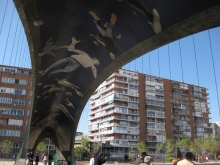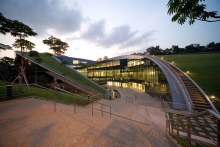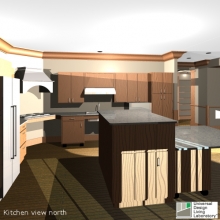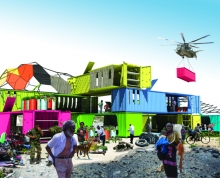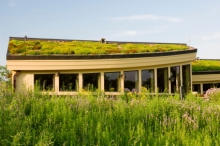Madrid's M-30 Urban Renewal Project: Puentes Cascaras
It’s easy to get Spanish blood boiling here in Madrid. Just mention the M-30 to a local, especially one living by the Manzanares River in the Arganzuela district south of the city. Their hostile reaction would be due to the fact that this part of town has been under major construction for what seems like an eternity. Once complete, Madrid’s M-30 urban renewal project will include improved roadways, pedestrian pathways, and West 8's Puentes Cascaras, which were inaugurated in September 2010.
